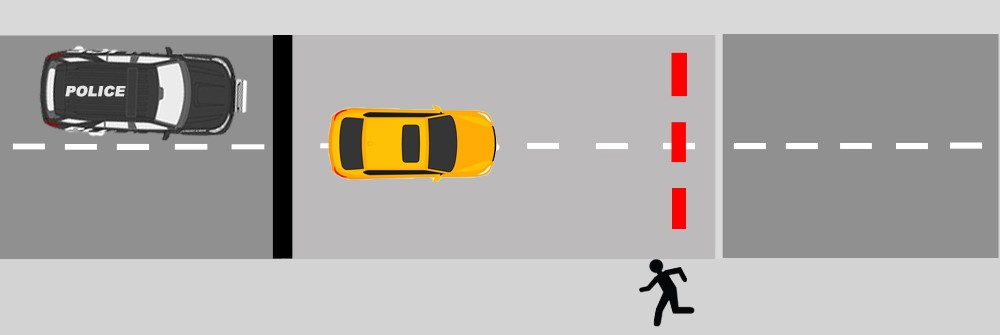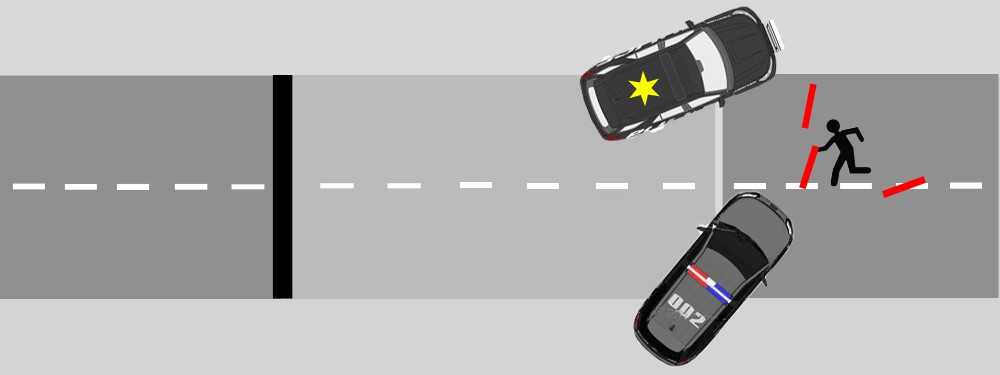Around 1993, new tire deflators were introduced. The new products promised quicker deployment and ease of use because they were a multi sided system, and presented Spikes up no matter how they landed.

Singular deployment was the mode of deployment, because the Systems often fell apart because the twist lock design and the string proved useless. The manufacture recomended deployment of the individual Strips due to assembly time required to twist the sections and attach a cord.

Picture 1, Shows a system with a string attached. (PIc 2) shows the system on the roadway and appears the system was placed into a perfect position on the roadway. Notice the first two strips attached and the space between the third strip? Simply falling onto the road would seperate the strips.

Singular deployment was a new deployment style where multiple spikes (STIXS) were deployed without a cord attached. Officers would deploy the spikes into the path of the target. The pursuit Officers would then drive around the spikes. The deployment officer(s) would then re-enter the roadway to clear the spikes off the road.
Since the officer could not predict in which lane to deploy, he was more effective to wait and target the car at close range. These STIXS were deployed without the use of protective cover. This started a new trend of deployng spikes whenever and wherever, and soon, the begining of serious incidents with Spikes.

Another tactic was to use a patrol car as a road block and deploy into the adjacent lane to funnel the target vehicle over the spikes. These new tactic created a false sense of protective cover.

Singular Deployment was quicker, but the lack of safety, soon became apperant, and brought up many concerns.

Spikes (STIXS) individually deployed is the primary cause of incidents where deployment officers have been struck by fellow officers while clearing the spikes out of the roadway. The Spikes on the highway, is the primary cause for drivers avoiding spikes and losing control of vehicles. Officers were taught to go around the spikes to avoid puncturing tires. Most often the spikes were scattered and this created to the confusion.
The result of the ’93 deployment tactics.
The police tool which had such a perfect record, was on its way to developing a dangerous reputation. Many in Law enforcement adopted the “quick and simple” deployment methods over the old style systems and tactics.
